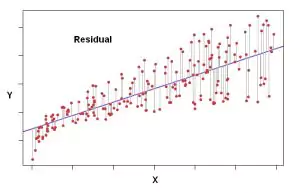In the realm of statistics, various symbols and formulas are utilized to analyze and interpret data. One such symbol is μ (pronounced “mew”), which represents the population mean. Understanding the concept of the population mean and its calculation is essential for conducting accurate statistical analyses. In this article, we will delve into statistics homework help online and try to explain the significance of μ, explore the relevant formulas, and highlight its role in statistical research.

✅ AI Essay Writer ✅ AI Detector ✅ Plagchecker ✅ Paraphraser
✅ Summarizer ✅ Citation Generator
Understanding the Population Mean
The population mean, denoted by the symbol μ, is a fundamental concept in statistics, much like sigma in stats which represents the standard deviation. It represents the average score of a specific variable within an entire population. By calculating the population mean and understanding sigma, researchers gain valuable insights into the central tendency and variability of a given population.
To calculate the population mean, we employ the following formula:
μ = ( Σ Xi ) / N
Here, Σ Xi represents the sum of all scores present in the population, while N denotes the total number of individuals or cases within the population. The population mean is calculated by summing up all the scores in the population and dividing by the total number of individuals or a case in statistics.
Significance of the Population Mean
The population mean plays a crucial role in statistical analyses. It serves as a reference point to compare individual scores and assess their relative position within the population. Additionally, the population mean provides essential information about the central tendency of the data distribution, aiding in the identification of patterns and trends.
To better comprehend the application of the population mean, let’s consider a hypothetical example. Suppose we want to determine the average income of individuals residing in a specific city. By collecting income data from the entire population of the city and calculating the population mean, we can gain insights into the overall income level of its residents. Moreover, understanding the concept of x bar in Statistics, which represents the sample mean, can help us make inferences about the population mean based on a representative subset of the population.
Relationship with Other Statistical Measures
The population mean is closely related to other statistical measures such as the population standard deviation and variance. The standard deviation, denoted by σ, measures the spread or variability of scores around the population mean. On the other hand, the population variance, represented by σ^2, quantifies the average squared deviation of scores from the population mean.
In situations where it is impractical or impossible to collect data from an entire population, researchers often rely on samples. The sample mean, denoted by x̄, serves as an estimate of the population mean based on the observed data. While the sample mean provides valuable insights, it is subject to sampling variability and may not perfectly represent the population mean.
Practical Applications and Limitations
The concept of the population mean finds applications in various fields. In social sciences, it helps researchers analyze survey data and understand population characteristics. In economics, the population mean assists in studying macroeconomic indicators such as GDP. Furthermore, in quality control processes, the population mean aids in evaluating product performance and ensuring consistency.
When working with the population mean, it is essential to be aware of certain limitations. First, outliers or extreme values within the data can significantly impact the population mean, skewing its interpretation. Additionally, the accuracy of the population mean depends on the representativeness of the collected data and the validity of the assumptions made.
Providing Insights into Population Tendencies
In conclusion, the population mean (μ) is a vital statistical concept that provides insights into the central tendency of a population. By understanding its calculation and significance (just like with N in Statistics), researchers can make informed decisions and draw meaningful conclusions from their data. The population mean serves as a foundation for various statistical analyses and helps researchers uncover patterns, trends, and relationships within populations.
FAQ
What does μ represent in statistics?
In statistics, μ represents the population mean. It denotes the average score of a specific variable within an entire population.
How is the population mean calculated?
The population mean is calculated by summing up all the scores in the population and dividing by the total number of individuals or cases. The formula is as follows: μ = ( Σ Xi ) / N.
What is the significance of the population mean in statistical analysis?
The population mean plays a crucial role in statistical analysis. It serves as a reference point for comparing individual scores, understanding central tendency, and identifying patterns and trends within the population.
Can the population mean be equal to zero?
Yes, the population mean can be equal to zero if the sum of all scores in the population is zero or if there is a balanced distribution of positive and negative scores that cancels out each other’s effects.
How does the sample mean differ from the population mean?
The sample mean, denoted by x̄, is an estimate of the population mean based on data collected from a sample of the population. While the sample mean provides insights, it is subject to sampling variability and may not perfectly represent the population mean. The larger the sample size, the closer the sample mean tends to be to the population mean.
Follow us on Reddit for more insights and updates.





Comments (0)
Welcome to A*Help comments!
We’re all about debate and discussion at A*Help.
We value the diverse opinions of users, so you may find points of view that you don’t agree with. And that’s cool. However, there are certain things we’re not OK with: attempts to manipulate our data in any way, for example, or the posting of discriminative, offensive, hateful, or disparaging material.